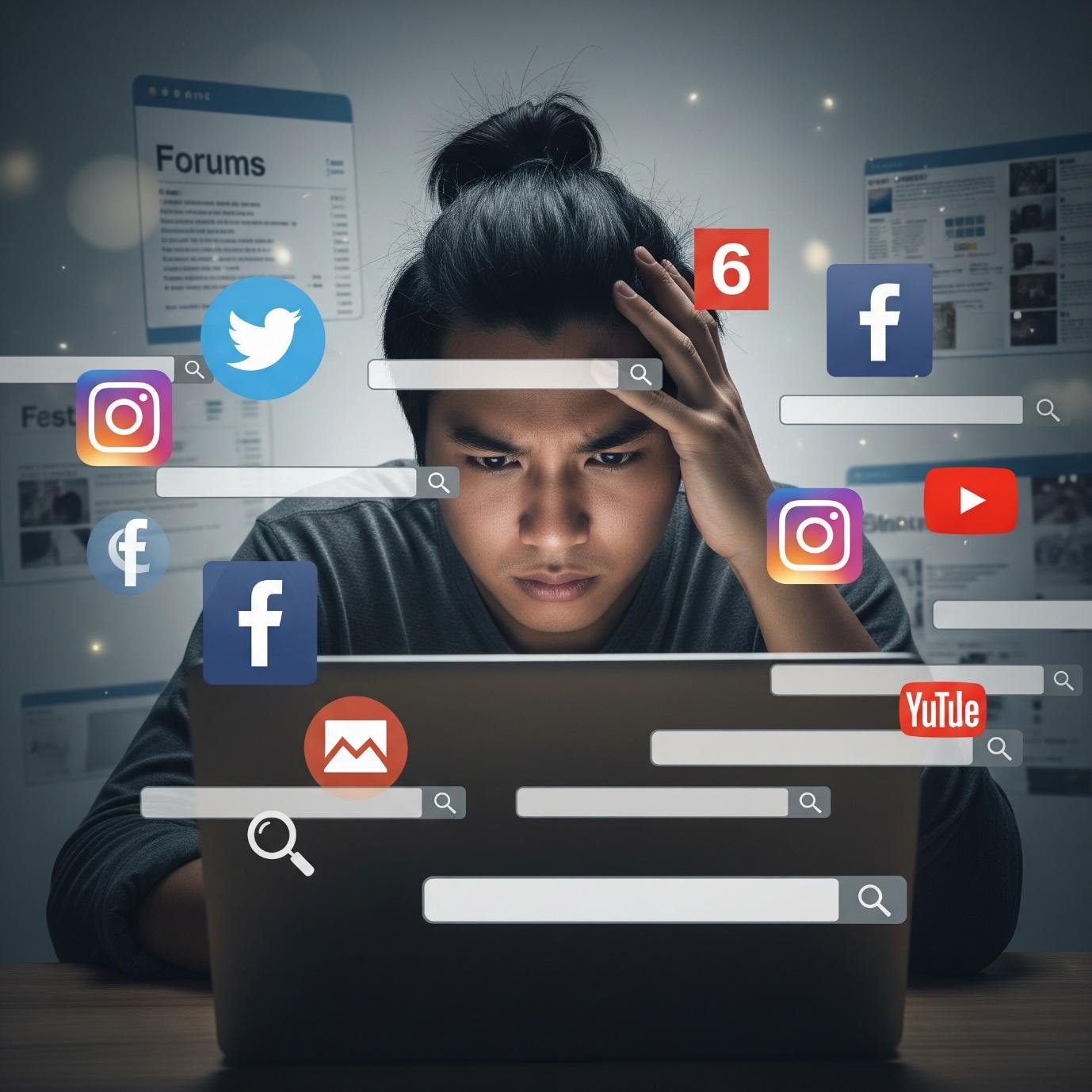In the bustling digital marketplace, small eCommerce brands often find themselves in a David-and-Goliath struggle against larger competitors with massive marketing budgets. While traditional advertising can be prohibitively expensive, a powerful, cost-effective, and increasingly vital strategy lies within reach: micro-influencer marketing.
This comprehensive guide will explore why micro-influencers are not just a trend but a non-negotiable pillar for small eCommerce brands looking to carve out their niche, build authentic connections, and drive measurable growth. We’ll unearth their unique advantages, delve into how to identify and collaborate with them, and provide actionable strategies to transform your marketing efforts.
Why Micro-Influencers Are a Non-Negotiable Marketing Pillar for Small eCommerce Brands
Before diving into the practicalities, let’s reinforce why micro-influencers offer a distinct advantage for smaller online businesses:

- Higher Engagement Rates:
Micro-influencers, typically defined as individuals with 1,000 to 100,000 followers, boast significantly higher engagement rates than their macro or celebrity counterparts1. While macro-influencers might have millions of followers, their engagement often hovers around 2-5%. In contrast, micro-influencers frequently achieve engagement rates of 10% or even higher2. This means their audience is more actively interacting with their content, leading to a greater likelihood of your brand’s message being seen and acted upon.
- Authenticity and Trust:
Micro-influencers often cultivate a more personal and authentic relationship with their audience. Their followers view them as relatable, trustworthy peers rather than distant celebrities3. This genuine connection translates into higher trust in their recommendations. For small eCommerce brands, building trust is paramount, and micro-influencers provide a powerful avenue to achieve this by lending their credibility to your products.
- Niche Targeting and Relevance:
These influencers typically focus on very specific niches – whether it’s sustainable fashion, artisan coffee, eco-friendly home goods, or niche hobbies. This allows small eCommerce brands, which often cater to specific audiences themselves, to target their ideal customers with pinpoint accuracy4444. Marketing through a micro-influencer whose audience perfectly aligns with your product offering ensures your message reaches the most receptive ears, minimizing wasted ad spend.
- Cost-Effectiveness:
Perhaps one of the most compelling reasons for small eCommerce brands to embrace micro-influencers is their affordability. Unlike celebrity endorsements that can cost millions, or even macro-influencers who command thousands, many micro-influencers are open to collaborations that involve free products, affiliate commissions, or smaller flat fees5555. This makes influencer marketing accessible even to brands with limited marketing budgets.
- Improved Conversion Rates:
The combination of high engagement, authenticity, niche targeting, and trust often culminates in higher conversion rates. When a trusted micro-influencer genuinely recommends a product to their engaged and relevant audience, those followers are far more likely to convert into paying customers6.
Understanding these foundational advantages sets the stage for recognizing the immense potential micro-influencers hold for your small eCommerce brand.
The 5 Steps to Harnessing Micro-Influencer Power for Your Small eCommerce Brand
Let’s dissect the practical steps to implement a successful micro-influencer strategy.
Mistake #1: Not Knowing Your Target Audience (and Therefore Your Ideal Influencer)

The Problem: Many brands jump into influencer marketing without a clear understanding of who their ideal customer is or, consequently, what kind of audience their ideal influencer should have. This leads to collaborations that yield poor results because the message isn’t reaching the right people.
Why it Kills ROI: Collaborating with influencers whose audience doesn’t align with your target demographic is like shouting into a void. It wastes time, resources, and offers little to no return on investment.
How to Fix It:
- Deep Dive into Your Customer Persona: Before anything else, define your ideal customer in detail. What are their demographics (age, location, income)? What are their interests, pain points, and online behaviors? Where do they hang out online?
- Audience-First Influencer Selection: Once you know your customer, seek out micro-influencers whose audience is that customer. Look beyond follower count to engagement rates, comment quality, and the demographic data of their followers (if accessible).
Mistake #2: Hunting for Influencers in the Wrong Places

The Problem: Relying solely on obvious social media searches or expensive platforms can limit your reach and miss out on genuinely passionate micro-influencers who are eager to collaborate.
Why it Kills ROI: If you’re only looking where everyone else is looking, you’ll face more competition and potentially higher costs. Missing authentic, engaged communities means missing valuable opportunities.
How to Fix It:
- Hashtag Research: Conduct thorough research on relevant hashtags within your niche. Identify common hashtags used by your target audience and by people who already love products similar to yours. This can lead you to micro-influencers who are already creating content around those themes.
- Competitor Analysis: See who your competitors are working with (but don’t just copy). Analyze their successful collaborations to understand what kind of influencers resonate in your industry.
- Audience-Generated Content (UGC) Mining: Monitor your brand’s tagged posts and mentions. Often, your most loyal customers are micro-influencers in the making, already organically promoting your products. Reach out to them!
- Community Forums & Niche Blogs: Explore online communities, forums, and smaller blogs related to your niche. Passionate individuals in these spaces often have significant influence within their specific communities, even if their follower count isn’t massive on a single platform.
- Influencer Platforms (Budget-Friendly): While some platforms are costly, many offer tiered pricing or even free trials. Use them to streamline your search, but don’t rely solely on them. Look for platforms that specialize in connecting brands with micro-influencers.
Mistake #3: Sending Generic Outreach Messages

The Problem: Sending a mass-produced, impersonal email or DM that clearly hasn’t been tailored to the individual influencer. This is a quick way to get ignored.
Why it Kills Relationships: Influencers, even micro-ones, receive many outreach messages. A generic message signals a lack of genuine interest in them and their content, making them less likely to engage.
How to Fix It:
- Personalize Everything: Refer to their specific content, a post you genuinely enjoyed, or a particular aspect of their niche that aligns with your brand. Show you’ve done your homework.
- Clearly State Your Value Proposition: Why should they work with you? Highlight what your product offers their audience and what you offer them (e.g., free product, commission, exposure).
- Be Concise and Clear: Get straight to the point. Explain who you are, what you offer, and what you’re asking for. Include a clear call to action (e.g., “Would you be open to a quick chat?”).
- Offer Flexibility: Be open to different collaboration models (product exchange, affiliate links, sponsored posts). Let them know you’re willing to discuss options.
Mistake #4: Failing to Define Clear Goals and KPIs

The Problem: Launching an influencer campaign without specific, measurable goals (KPIs). Without these, you won’t know if your efforts are truly paying off.
Why it Kills Strategy: If you don’t know what success looks like, you can’t replicate it or improve upon it. This leads to aimless marketing and inefficient spending.
How to Fix It:
- Set SMART Goals: Ensure your goals are Specific, Measurable, Achievable, Relevant, and Time-bound. Examples:
- “Increase website traffic by 15% from influencer links in Q3.”
- “Generate 50 new email sign-ups through influencer campaigns next month.”
- “Achieve a 5x return on ad spend (ROAS) from influencer collaborations.”
- Track Key Metrics:
- Reach & Impressions: How many people saw the content?
- Engagement Rate: Likes, comments, shares, saves per post.
- Click-Through Rate (CTR): How many people clicked the link you provided?
- Conversions: Sales, sign-ups, downloads directly attributed to the influencer.
- Cost Per Acquisition (CPA): How much did it cost to acquire one customer through this influencer?
- Use Unique Codes/Links: Provide each influencer with a unique discount code or trackable link (UTM parameters) to accurately measure their direct impact on sales and traffic.
Mistake #5: Neglecting Relationship Building and Long-Term Partnerships

The Problem: Treating influencer marketing as a one-off transaction rather than an opportunity to build lasting relationships.
Why it Kills Long-Term Growth: The most successful influencer strategies are built on trust and mutual benefit. One-time collaborations often lack the authenticity and sustained impact of ongoing partnerships.
How to Fix It:
- Foster Genuine Connections: Engage with their content, share their posts (even outside of your collaboration), and offer constructive feedback.
- Provide Excellent Product/Service: Ensure the product or service you provide to the influencer is high-quality and aligns with their expectations. Their genuine satisfaction is your best asset.
- Fair Compensation: If a campaign is successful, consider offering fair monetary compensation for future collaborations, not just free product. This shows you value their work.
- Open Communication: Maintain clear and consistent communication throughout the campaign and beyond. Be responsive to their questions and feedback.
- Turn Advocates into Partners: Identify micro-influencers who genuinely love your brand and convert them into long-term brand ambassadors. These ongoing relationships can be incredibly powerful for sustained growth and authentic promotion.
Tools to Help You Implement Your Micro-Influencer Strategy

- Social Media Platforms Themselves: Instagram, TikTok, YouTube, Pinterest, and even Facebook groups are excellent for direct searching via hashtags, exploring relevant communities, and identifying potential influencers through audience suggestions.
- Google Search: Use specific long-tail keywords combined with “influencer” or “blog” (e.g., “sustainable fashion micro-influencers,” “best artisan coffee Instagram accounts”).
- Influencer Marketing Platforms (e.g., Aspire, Grin, Upfluence): While some are enterprise-level, many offer features suitable for smaller brands, including influencer discovery, CRM, campaign management, and analytics. Look for platforms that cater specifically to micro or nano-influencers.
- Affiliate Marketing Software (e.g., Refersion, Rewardful): These tools can help you manage and track affiliate relationships, perfect for performance-based collaborations with micro-influencers.
- Your Own Analytics (Google Analytics, eCommerce Platform Reports): Crucial for tracking website traffic, conversions, and sales generated from your influencer campaigns. Ensure you set up proper UTM tracking for all links provided to influencers.
Many small eCommerce brands rely on influencer discovery tools to simplify the process of finding creators who align with their audience. Platforms like Heepsy are often used for this purpose, offering filters for location, audience demographics, and engagement levels. Using these tools as part of the research process helps businesses narrow down potential collaborators and focus on partnerships likely to deliver better results.
Ready to Unlock Your Brand’s Potential with Micro-Influencers?
The competitive digital landscape demands agility and authenticity, and mastering micro-influencer marketing is crucial for small eCommerce brands to thrive. Whether it’s identifying the perfect niche advocate, crafting personalized outreach, or meticulously tracking your ROI, the opportunities to boost your organic visibility and sales are immense.
At Daybe Commerce, we specialize in helping businesses like yours achieve peak eCommerce performance. From strategic influencer identification and campaign management to ensuring optimal conversion paths and user journeys, our expert team provides tailored services designed to drive measurable growth.
Unlock the full potential of your brand’s marketing. Reach out to Daybe Commerce today to explore our services or schedule a free consultation. Let’s work together to build a smarter, more effective micro-influencer strategy, ensuring your small eCommerce brand thrives in the digital age and beyond.
I am a committed and seasoned content creator with expertise in the realms of technology, marketing, and WordPress. My initial foray into the world of WordPress occurred during my time at WebFactory Ltd, and my involvement in this field continues to grow. Armed with a solid background in electrical engineering and IT, coupled with a fervor for making technology accessible to the masses, my goal is to connect intricate technical ideas with approachable and captivating content.
